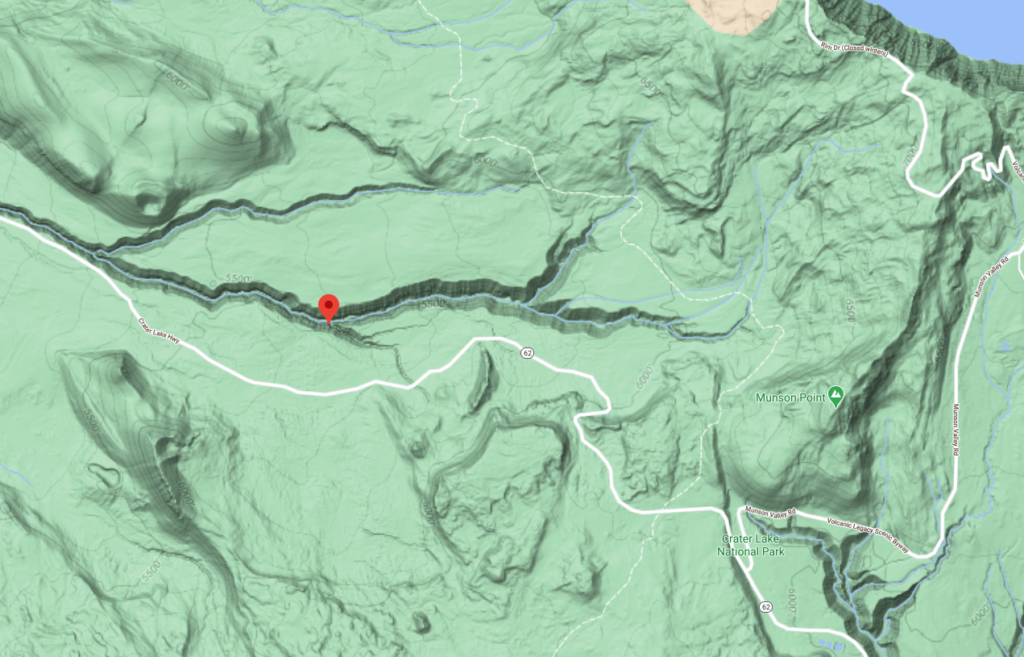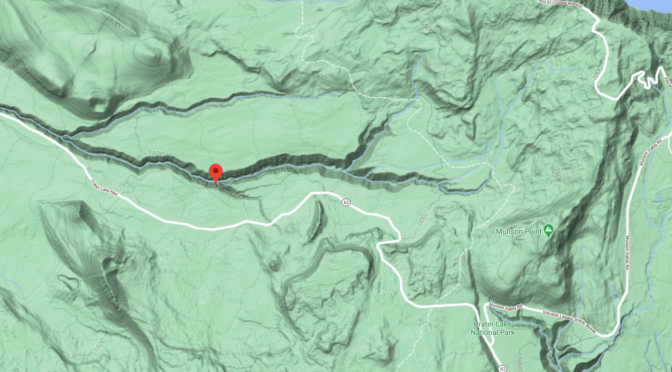Llao’s Hallway – Prominent Geological Features of Crater Lake National Park

This 125-foot-deep gorge was cut through pumice material by stream erosion. It is located on Whitehorse Creek, a tributary of Castle Creek and once contained a trail leading through narrow passages to numerous cave-like amphitheaters. Though the pumice flows spread all the way down Castle Creek, the later scoria flows did not extend far beyond the park boundary, a distance of little more than 7 miles from the source. Moreover, as in other canyons, the scoria flows were confined to a central and narrow depression in the earlier pumice deposits. It is among these scoria deposits that the only “fossil fumaroles” of Castle Creek are to be found, and they are almost restricted to the part of the canyon above the junction of Castle with Whitehorse Creek. Here the dark scoria deposits have been carved into the spectacular gorge known as Llao’s Hallway, a chasm narrow enough in places to be spanned by outstretched arms, yet 200 feet deep. [The Climax: Culminating Explosions of Pumice and Scoria: The Castle Creek Flows, The Geology of Crater Lake National Park, Oregon (1942) by Howell Williams.]

Other pages in this section
*** previous title *** --- *** next title ***


